
New York City is an architectural marvel that also serves as an economic hub for the United States. The city has incredible architectural structures like the Pieter Claesen Wyckoff House, a Dutch Colonial-style dwelling in Brooklyn, and the One World Trade Center, the most expensive office tower around the globe. Some of the most recognizable skyscrapers in the world stand towering in this skyline. In addition to reflecting the city’s richness, these skyscrapers are a testament to modern engineering and design. This article discusses the 8 tallest buildings in New York City, detailing their distinctive features and historical importance.
New York City, the most populous city in the United States, is home to more than 7,000 completed high-rise buildings. In its Midtown and Downtown regions, Manhattan houses most of these tall buildings, with 317 of them measuring at least 492 feet or more, surpassing Hong Kong and Shenzhen.
The skyscrapers standing tall in New York City are the epitome of architectural diversity, which outlines the progression of skyscraper design as well as technology over time. The Empire State Building’s Art Deco grace fights against 432 Park Avenue’s minimalistic modernism, showing how they belong to their respective times in terms of beauty and the development of technology.
One World Trade Center
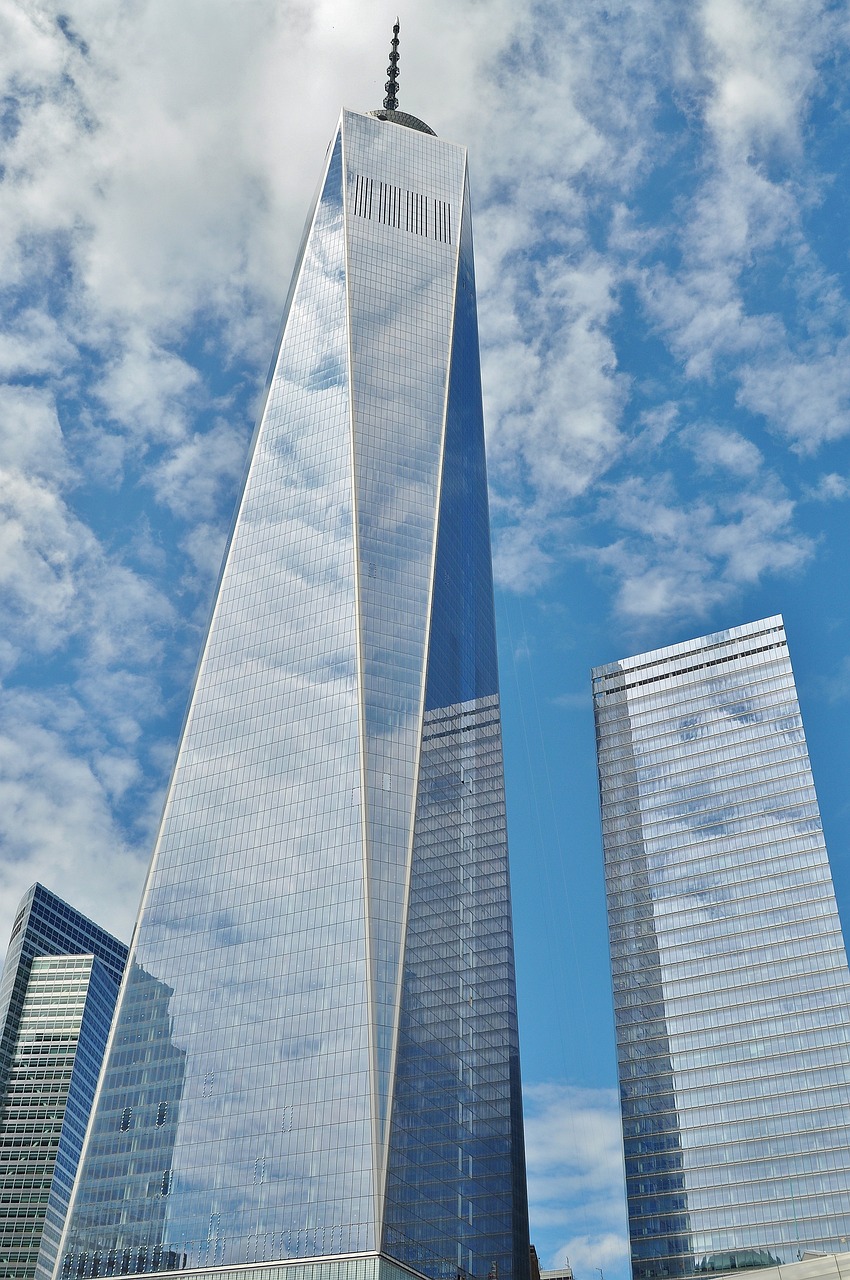
Year: 2014
Height [feet (m)]: 1,776 (541)
What is the Tallest Building in New York City?
One World Trade Center, also called Freedom Tower, designed by David Childs of Skidmore, Owings & Merrill, is the tallest building in New York and epitomizes resilience and modernity. At 1,776 feet high, it is a symbol of American independence. The tower’s base is an enormous cube block adorned with a myriad of reflective prisms that scatter light in numerous directions. At the apex, it gradually narrows down into eight isosceles triangles, forming a stunning glass façade-stitched needle-like peak above.
The blend between strength and transparency is showcased in this design, conveying a message of endurance and accessibility. There are sustainable elements such as rainwater collection and energy-saving devices, which add to its visual appeal and symbolic contribution. Its use of modern safety and eco-friendly technologies, therefore, sets a new standard for high-rise building construction, making it not only an architectural wonder but also a sign of optimism and rejuvenation.
Central Park Tower
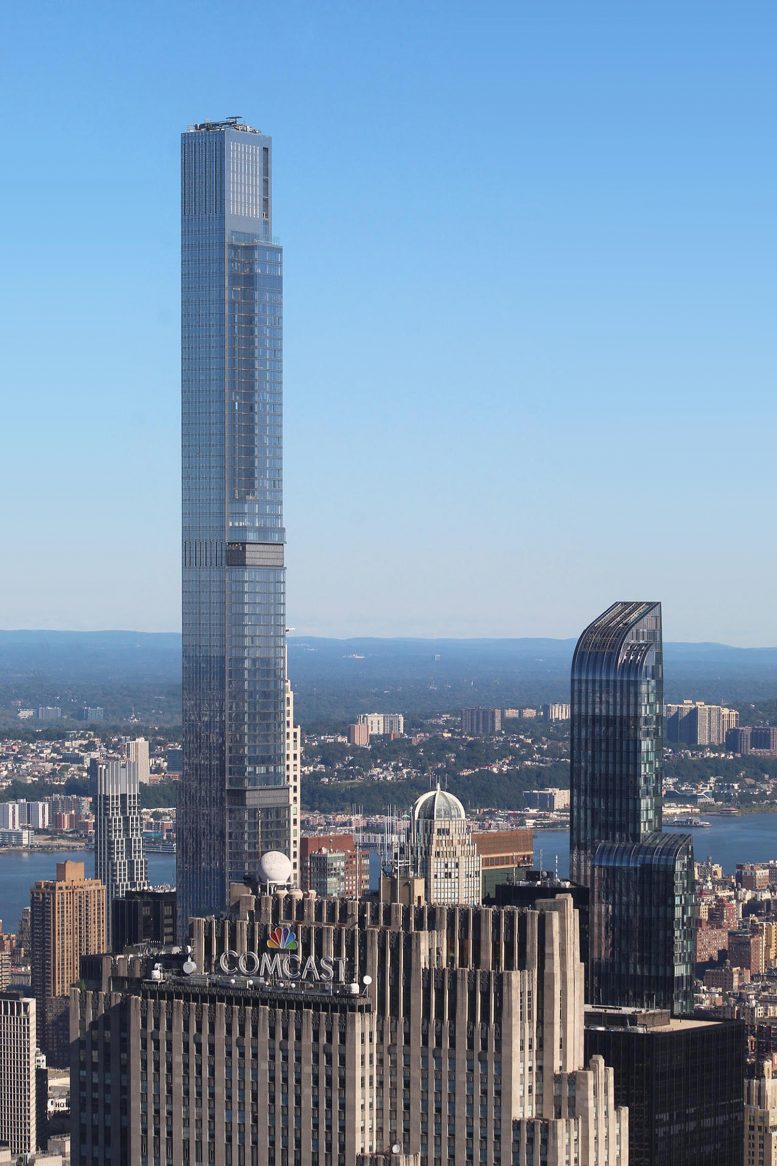
Year: 2020
Height [feet (m)]: 1,550 (472)
Central Park Tower, designed by Adrian Smith and Gordon Gill Architecture, is the epitome of contemporary elegance and creative architectural design. At 1,550 feet (472 meters), it is not only the tallest residential skyscraper in the world but also the second-tallest building in New York City. Its sleek, smooth glass façade reflects the ever-changing skyline and summer greenery in Central Park beneath it.
However, the concept of the tower is vertical and stately, which means that it has a broad and strong foundation but a slender pinnacle, making it appear weightless as one looks upwards. The interior has very luxurious residences together with private facilities such as the park club, which offer unparalleled relaxation and social spaces. This tower stands out because it redefines what high-rise living can be by providing stability and comfort through major changes made to its structure.
111 West 57th Street

Year: 2021
Height [feet (m)]: 1,428 (435)
The tower located at 111 West 57th Street, also known as Steinway Tower, showcases both the genius of engineering and elegance in design. New York’s third-tallest elegant skyscraper is 1,428 feet tall and has an amazing size proportion of 1:24. It was designed by SHoP Architects. Its terracotta and bronze façade is a nod to the old stone structures in New York, as is the glass curtain wall that provides wide views of Central Park.
The tower naturally incorporates the redesign of Steinway Hall, which is situated at its base, thus forming an eloquent interplay between modern-day opulence and classical charm. These features are manifested in apartments that possess tall ceilings and bespoke interiors suggesting great sizes, in spite of the narrow building. In Manhattan, Steinway Tower is the epitome of architectural modernity, packed with historic flavor.
One Vanderbilt
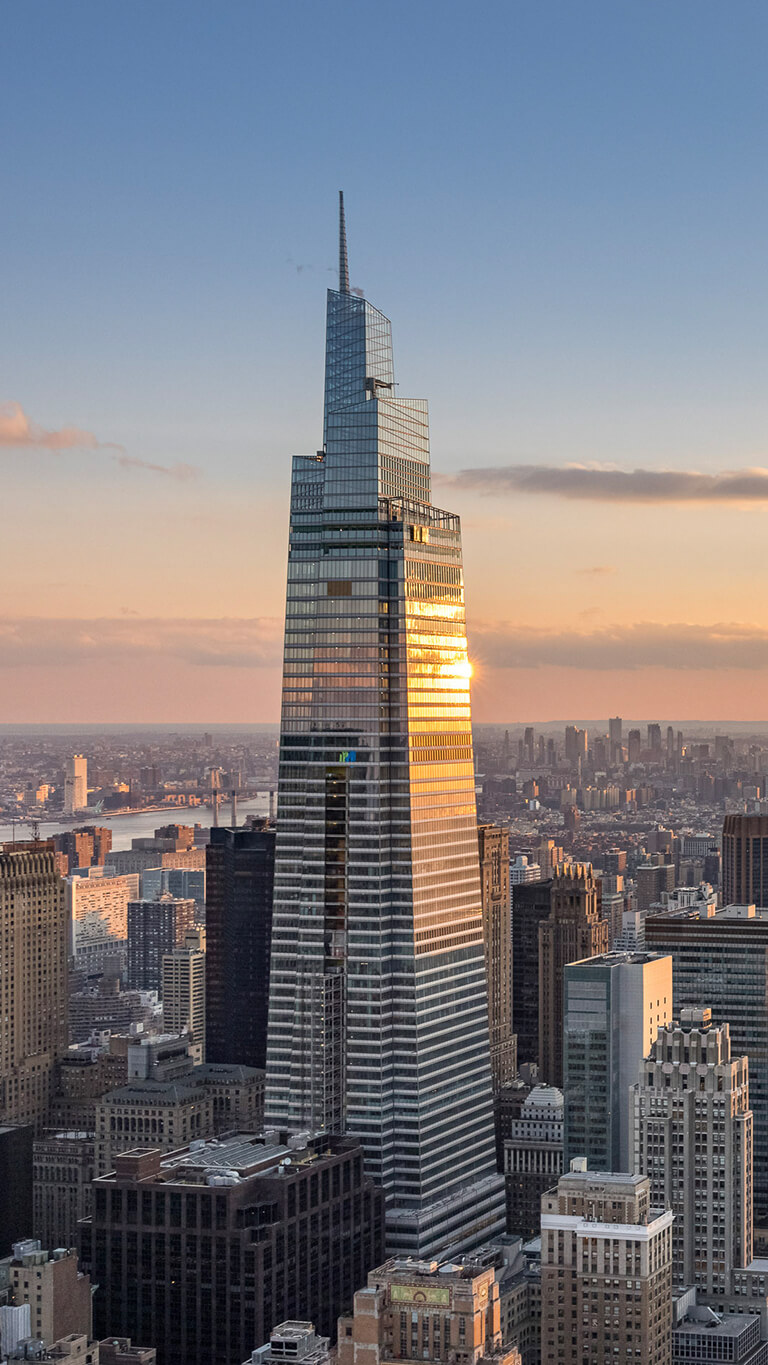
Year: 2020
Height [feet (m)]: 1,401 (427)
Standing at 1,401 feet, the fourth-tallest building in New York, One Vanderbilt, designed by Kohn Pedersen Fox Associates, is a drastic addition to Manhattan’s skyline. The crystalline-shaped structure consists of sharp, tapering lines suggesting a sense of dynamic movement, harmonizing with nearby buildings such as the Chrysler Building. It possesses a façade made out of advanced glass with terracotta that bounces off the sunshine, producing dynamic differences in contrast between light and dark.
The design concept’s commitment to environmental responsibility is expressed through sustainable design components like high-efficiency mechanical systems and rainwater recycling. The skyscraper’s integration with Grand Central Terminal increases urban connectivity while providing modern workplace spaces along its interior walls, and the Summit Observatory gives a 360-degree view of the city landscape. This building represents tomorrow’s skyscraper, combining innovation, sustainability, and aesthetic sophistication.
432 Park Avenue
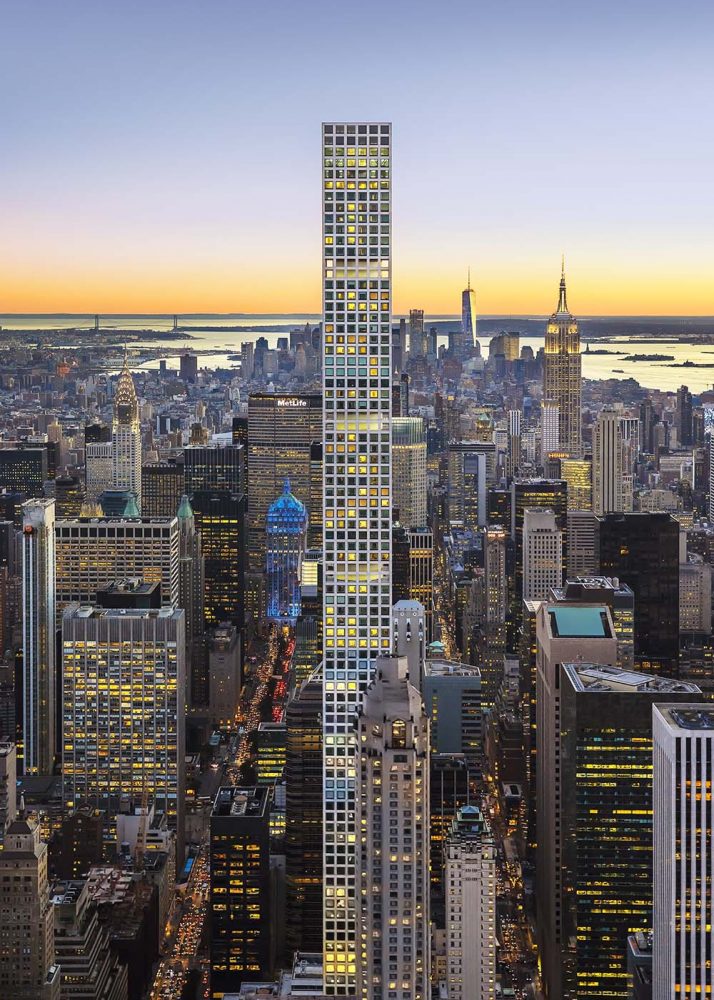
Year: 2015
Height [feet (m)]: 1,397 (426)
Standing at 1,396 feet, 432 Park Avenue is the fifth-tallest building in New York City. Designed by Rafael Viñoly, this structure is a paragon of minimalist modernism. Its geometric form, simple and perfect in a square floor plan with uniformly spaced windows, creates a grid-like pattern. The building’s height-to-width ratio is one of the least,” at 15:1. Because of this extreme slenderness, 432 Park Avenue has been branded as one of the new “pencil towers” for New York City.
A sturdy concrete core and a unique engineering approach help distribute wind loads uniformly. The white concrete and glass façade are timelessly elegant, reflecting both the sky and the city. The residences offer vast vistas of Central Park and Manhattan that are improved with their high ceilings as well as chic finishing touches. 432 Park Avenue—an epitome of contemporary architectural design in terms of visual clarity and performance goals—stands out among all contemporary buildings in New York City.
30 Hudson Yards
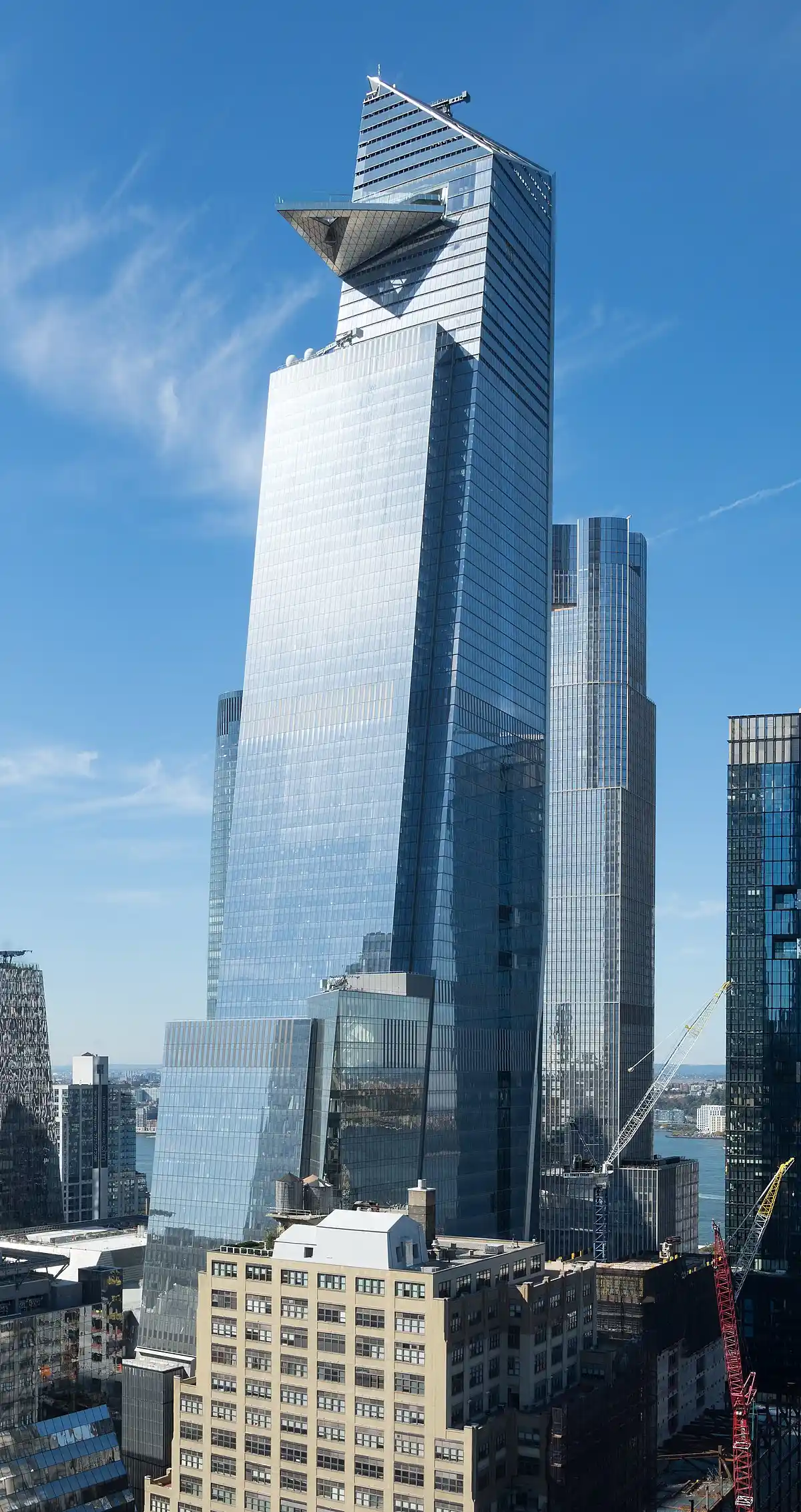
Year: 2019
Height [feet (m)]: 1,270 (387)
Design by Kohn Pedersen Fox Associates, 30 Hudson Yards is the sixth-tallest building in New York City, at 1,270 feet. The building’s sleek and angular structure and glass façade reflect the innovative spirit of the Hudson Yards project. The architectural expression of a filtered image in different shades forms the underlying idea behind the tower’s form, with its slanting lines forming different angles as well as thinner parts.
Inside, the building houses luxury office spaces equipped with modern facilities specifically designed for well-off clients. Located on a building’s roof, Edge is the highest sky deck in the Western Hemisphere, with magnificent 360-degree views. It serves as an illustration of how to combine energy-conserving buildings and gardens together, thus affirming its concern for environmental conservation. 30 Hudson Yards is a skyscraper that gives new meaning to the New York City skyline through its creativity in design and sustainable urbanism.
Empire State Building
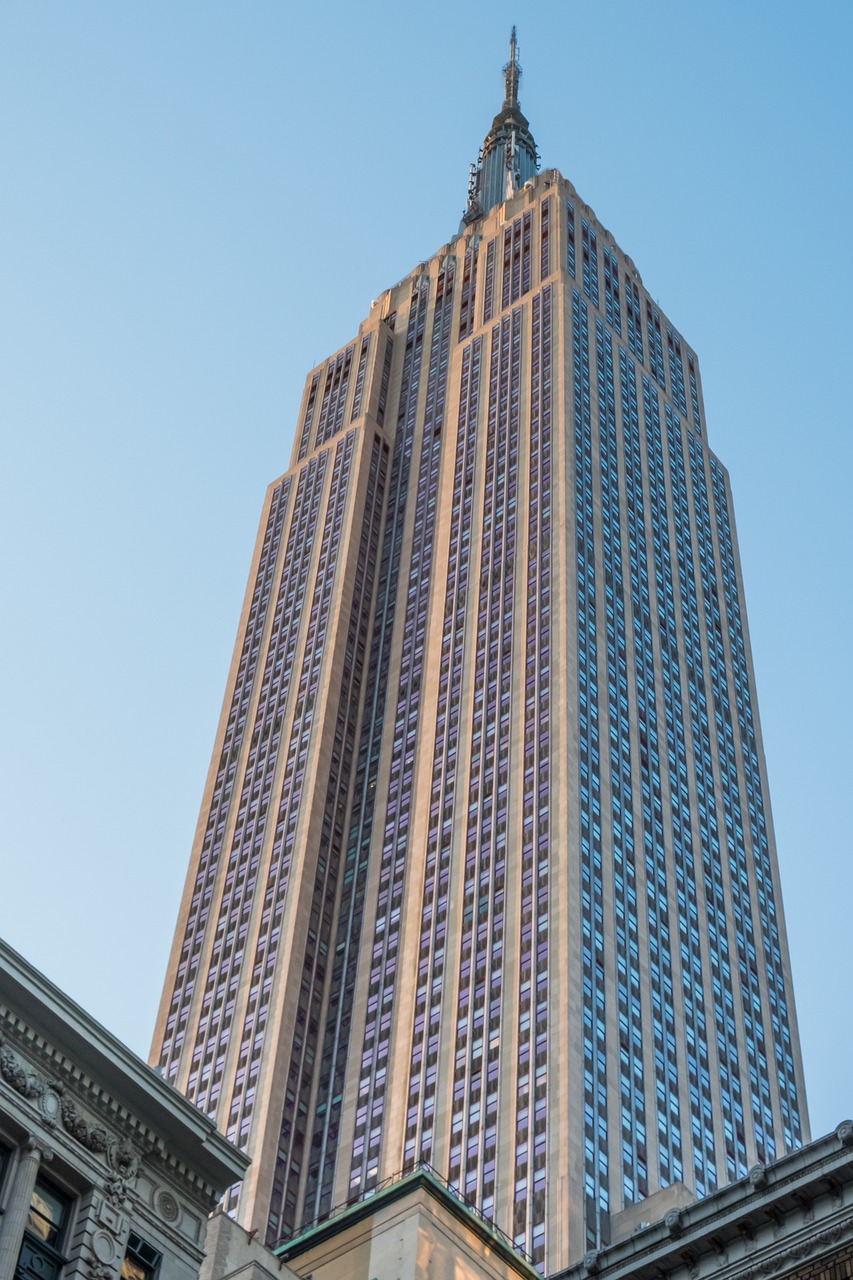
Year: 1931
Height [feet (m)]: 1,250 (381)
The Empire State Building, which stands as New York’s seventh tallest building, is an Art Deco masterpiece designed by Shreve, Lamb & Harmon and rises 1,250 feet high. Completed in 1931, this landmark showed off its distinctive stepped shape combined with a simple, elegant limestone façade. The building has setbacks in its design; resulting in decreasing tiers ending in a grand spire that signifies the architectural aspiration of New York.
The steel structure is covered with Indiana limestone and granite, providing it with ageless attractiveness and strength. The Art Deco style, characterized by marble and aluminum finishing, is vividly displayed in the lobby. The viewing decks on the 86th and 102nd floors offer unparalleled views of the city. The Empire State Building represents great engineering skills from the early 20th century and will remain one of New York City’s defining symbols.
Bank of America Tower
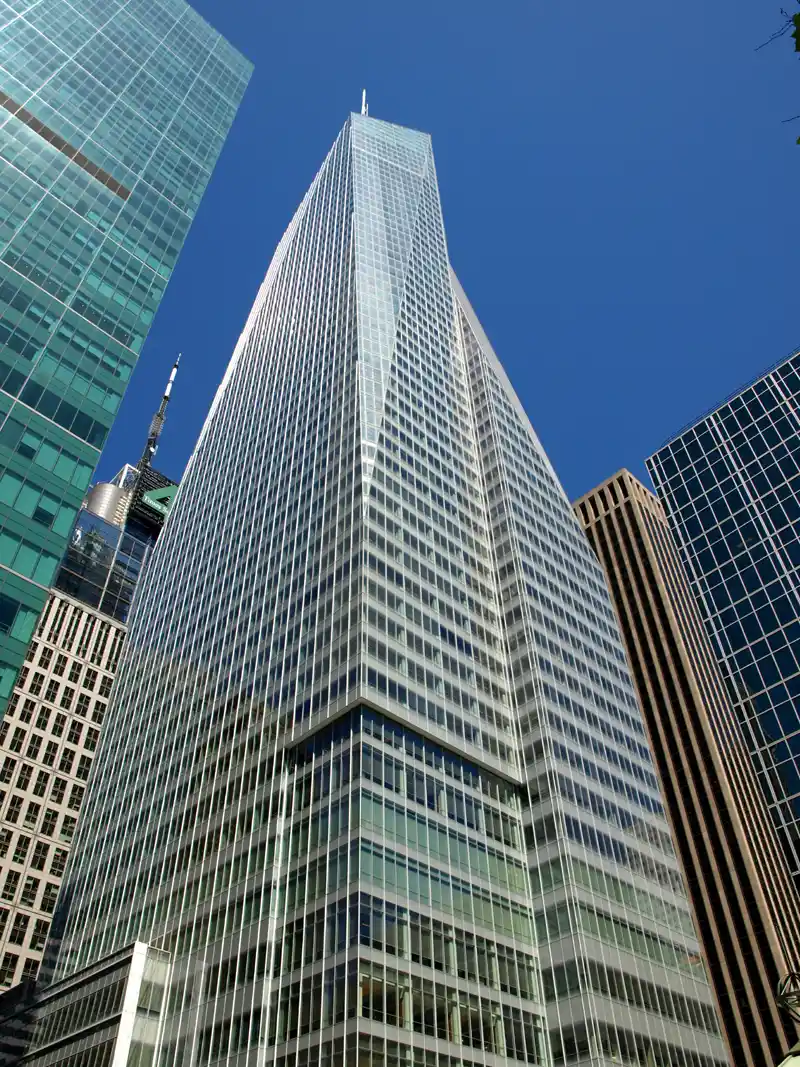
Year: 2009
Height [feet (m)]: 1,200 (366)
The Bank of America Tower at One Bryant Park, designed by COOKFOX Architects, rises to a height of 1,200 feet and ranks as the eighth tallest building in New York. It is notable for its crystal shape and multi-faceted glass surface, which increase thermal efficiency and provide illumination from natural light. The structure got LEED Platinum certification because it used the most sophisticated green technologies, such as rainwater collection systems, waterless urinals, and co-generation plants.
The lower floors of the tower, which are semi-transparent, allow people to interact, while the sculpted façade creates a lively interplay of light and shadow. The interior itself consists of local and recyclable materials, therefore demonstrating that its commitment is to sustainability. Because it uses advanced environmental techniques in combination with careful architectural designs, the Bank of America Tower is seen as a benchmark for current green towers.

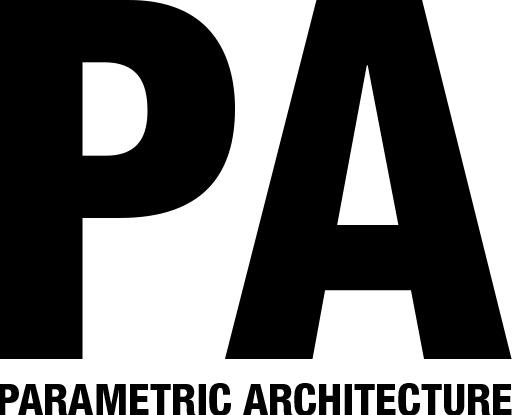







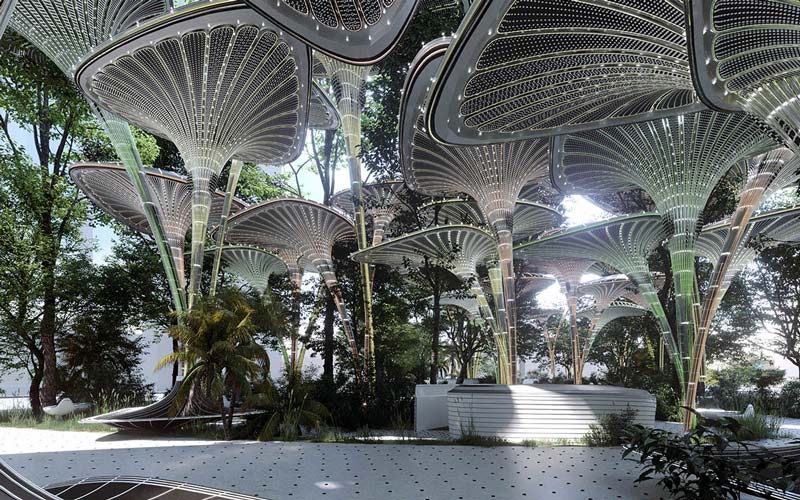
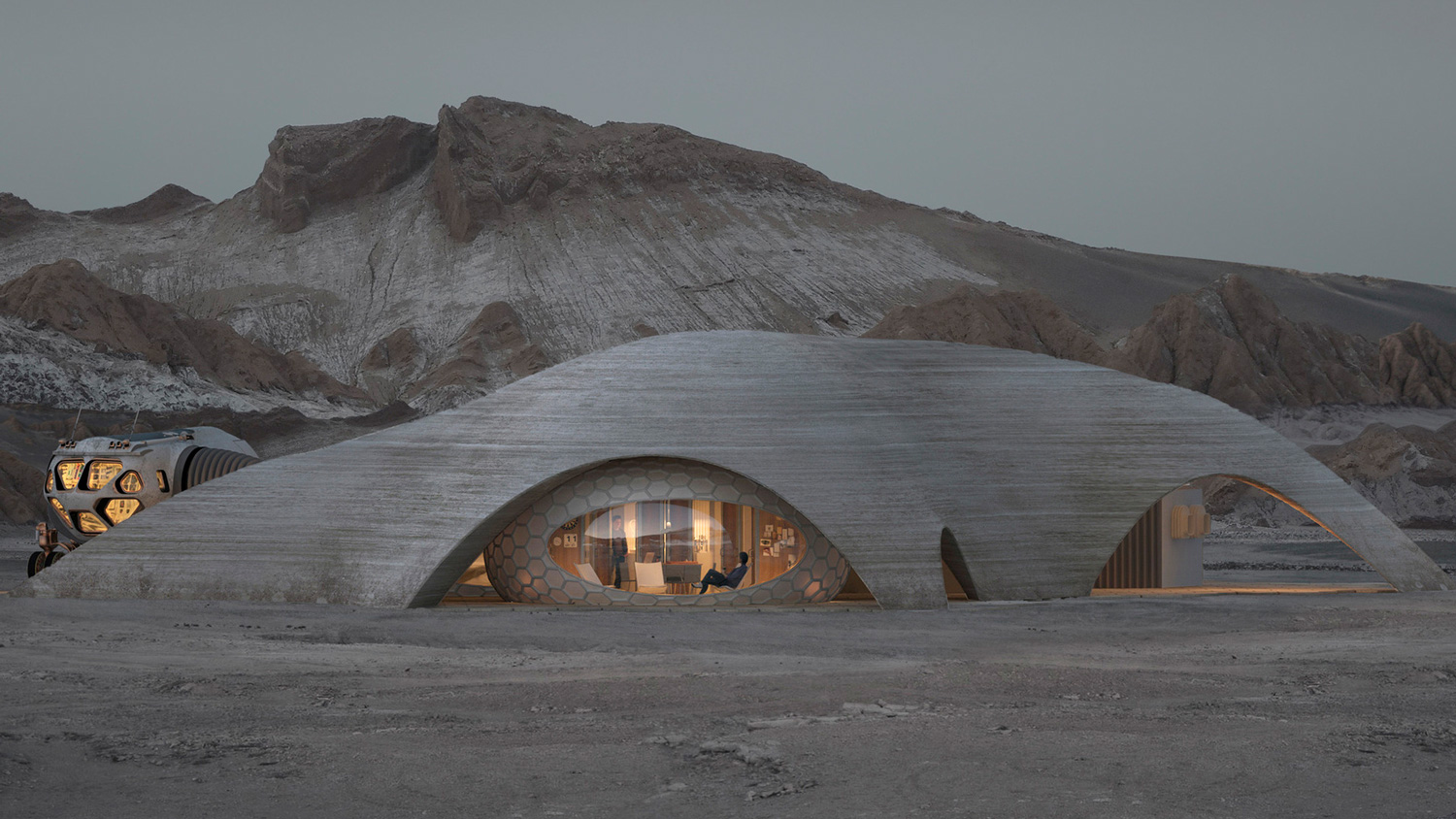






Leave a comment